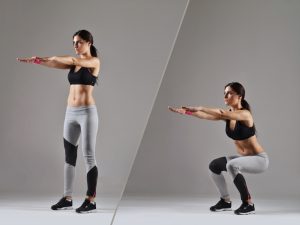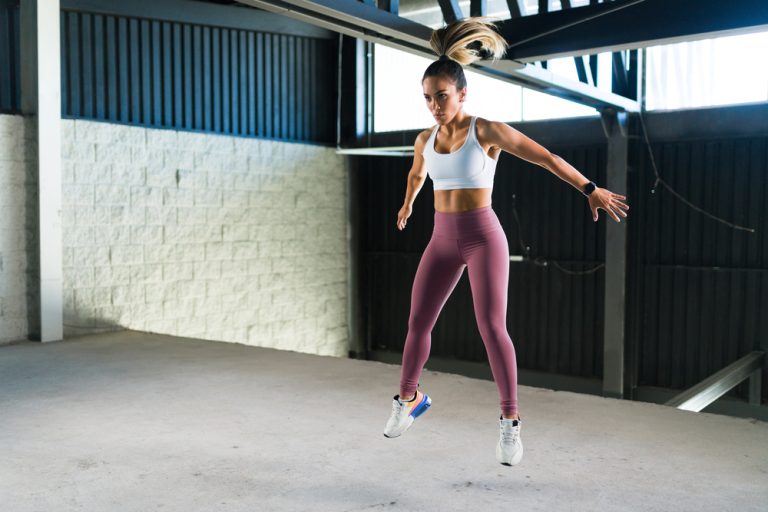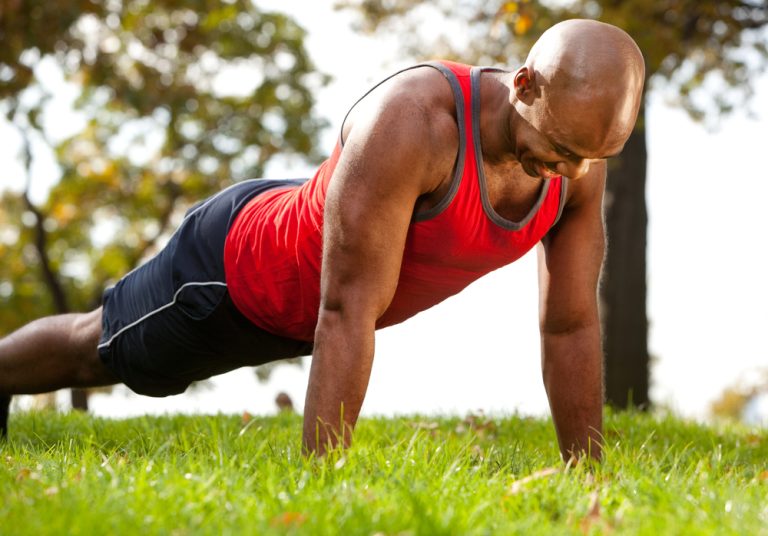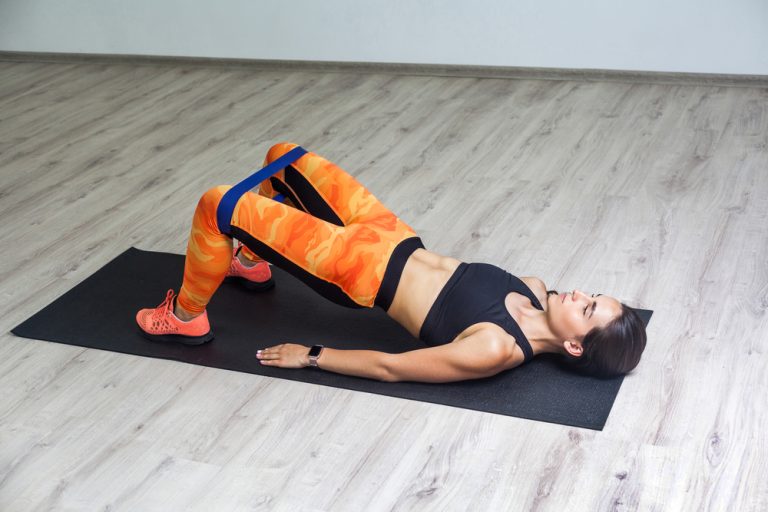Squats are one of the most effective exercises for building lower body strength, improving balance, and enhancing overall athletic performance. This timeless movement engages multiple muscle groups, including the quadriceps, hamstrings, glutes, and core, making it a cornerstone of fitness routines for athletes, beginners, and rehabilitation programs alike. Performing squats regularly improves functional mobility, posture, and metabolism — all while shaping stronger legs and a more powerful body.
Whether you train at home or the gym, mastering squats offers a gateway to total-body transformation. Below are seven powerful squat variations designed to challenge different muscle fibers, elevate your endurance, and help you achieve balanced, sustainable strength.
1. Bodyweight Squat: Foundation of All Movement
The bodyweight squat is the starting point for learning proper squat mechanics. Stand with your feet shoulder-width apart, toes slightly turned outward. As you lower your hips, keep your chest lifted and knees tracking over your toes. This foundational move strengthens your legs and core while improving flexibility and coordination.
Practicing bodyweight squats daily enhances your balance and prepares your joints for more advanced exercises. Beginners should focus on controlled depth and consistency rather than speed. Over time, your form improves, making it easier to transition to weighted squats and more complex variations.
2. Goblet Squat: Boost Core and Stability
The goblet squat introduces resistance while maintaining proper form. Hold a dumbbell or kettlebell close to your chest and perform a squat with controlled movement. This position keeps your torso upright and engages your core, glutes, and thighs simultaneously.
Goblet squats are excellent for developing posture awareness and hip mobility. They’re especially helpful for correcting imbalances and teaching the importance of keeping weight centered through the heels. Adding progressive overload — by slowly increasing the weight — enhances strength gains while reducing the risk of injury.
3. Front Squat: Elevate Quadriceps and Core Control
Front squats shift the load to the front of your body, placing more emphasis on the quadriceps and upper back. Rest a barbell across your shoulders, just under your chin, and maintain an upright torso as you descend. The barbell front squat challenges your balance and flexibility more than traditional back squats.
This variation also strengthens the thoracic spine and improves posture. Athletes and lifters often use front squats to enhance their clean and jerk performance or to reinforce upright positioning in compound lifts. Consistent practice develops functional strength transferable to everyday movements like lifting or climbing stairs.
4. Back Squat: Classic Power Builder
The back squat remains the gold standard of lower body exercises. With a barbell resting on your upper traps, you’ll engage nearly every major muscle in your legs and core. The movement’s biomechanics enable heavy lifting, promoting muscle growth, endurance, and hormonal response that supports fat loss.
Performing back squats improves overall athletic capacity, from sprinting to jumping. Maintaining proper depth — ideally thighs parallel to the ground or below — ensures maximum muscle activation. Always use a spotter or safety rack for heavy lifts to maintain form and prevent injury.
5. Bulgarian Split Squat: Unilateral Strength and Balance
The Bulgarian split squat targets one leg at a time, significantly improving balance, coordination, and stability. Stand a few feet in front of a bench, rest one foot behind you, and lower into a lunge position until your front thigh is parallel to the ground. Push through the heel to rise back up.
This single-leg variation isolates imbalances and enhances core stability. It also minimizes spinal compression compared to back squats, making it an ideal option for individuals with back discomfort. Over time, Bulgarian split squats develop both power and symmetry between the legs.
6. Overhead Squat: Total-Body Coordination and Mobility
The overhead squat is an advanced movement that demands exceptional flexibility, stability, and control. With a barbell or lightweight resistance held overhead, you must engage your shoulders, core, and hips to maintain balance throughout the descent and ascent.
This full-body exercise improves shoulder mobility and coordination while reinforcing proper squat mechanics. It’s particularly beneficial for athletes seeking to increase performance in Olympic lifts or functional fitness. Start with a dowel or empty barbell before progressing to heavier loads to perfect your technique safely.
7. Jump Squat: Explosive Power and Cardio Boost
Jump squats transform static strength into dynamic power. Begin with a traditional squat and explode upward, extending your hips and knees while jumping off the ground. Land softly and immediately lower back into the next repetition. This plyometric move increases leg strength, cardiovascular endurance, and athletic agility.
Jump squats are an excellent conditioning tool for sports requiring speed and vertical power, such as basketball or soccer. However, because of their high-impact nature, ensure proper warm-up and limit repetitions to prevent joint strain. When used strategically, they enhance both strength and fat-burning efficiency.
The Benefits of Incorporating Squats
Integrating squats into your fitness regimen provides a wealth of physical and metabolic advantages. Here are key benefits:
-
Full-body muscle engagement: Squats activate not just the lower body but also the core, lower back, and stabilizers.
-
Improved posture and mobility: Proper squat form trains spinal alignment and joint range of motion.
-
Enhanced athletic performance: They build foundational strength that translates into better running, jumping, and balance.
-
Increased metabolism: Heavy or dynamic squats trigger calorie-burning aftereffects, aiding in weight control.
-
Hormonal support: Research shows squats stimulate testosterone and growth hormone, supporting muscle repair and recovery.
Squats can be performed anywhere — in the gym, at home, or outdoors — using only bodyweight or simple tools like dumbbells, kettlebells, or resistance bands.
Common Squat Mistakes To Avoid
Even though squats appear simple, poor technique can lead to injury or diminished results. Watch for these frequent errors:
-
Knees collapsing inward – Keep knees aligned with toes to protect ligaments.
-
Rounding the back – Engage the core to maintain a neutral spine.
-
Heels lifting off the ground – Distribute weight evenly through heels and midfoot.
-
Shallow squats – Go deep enough to engage full muscle range.
-
Holding breath – Use controlled breathing for stability and rhythm.
Mastering proper form ensures you reap all the benefits while minimizing risk.
Progression and Program Design
To optimize results, integrate squats into your weekly routine 2–3 times, alternating between variations. Beginners might start with 3 sets of 12–15 bodyweight squats, while advanced lifters can perform weighted squats for lower reps with higher intensity.
Balance is key — pair heavy squat days with mobility and recovery sessions to prevent overtraining.
Remember that rest, nutrition, and consistency play equally vital roles. Gradual progression in resistance and range of motion will yield sustainable, long-term strength gains.
Conclusion
Squats are far more than just a leg exercise — they’re a full-body powerhouse that builds strength, confidence, and resilience. Whether you’re working toward athletic performance, improved mobility, or aesthetic goals, squats provide a foundation for lasting results.
By practicing the seven powerful squat variations outlined above, you can transform your lower body, boost endurance, and elevate your overall fitness journey. With proper form and consistency, squats will remain your ultimate ally in achieving strength and vitality for years to come.
Reference
National Strength and Conditioning Association. (2020). The Biomechanics of the Squat. https://www.nsca.com




